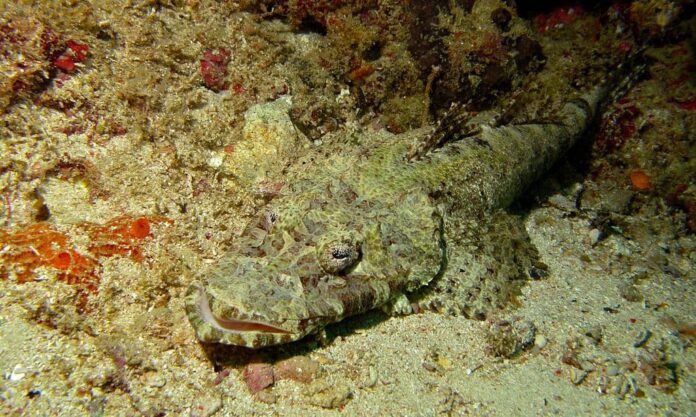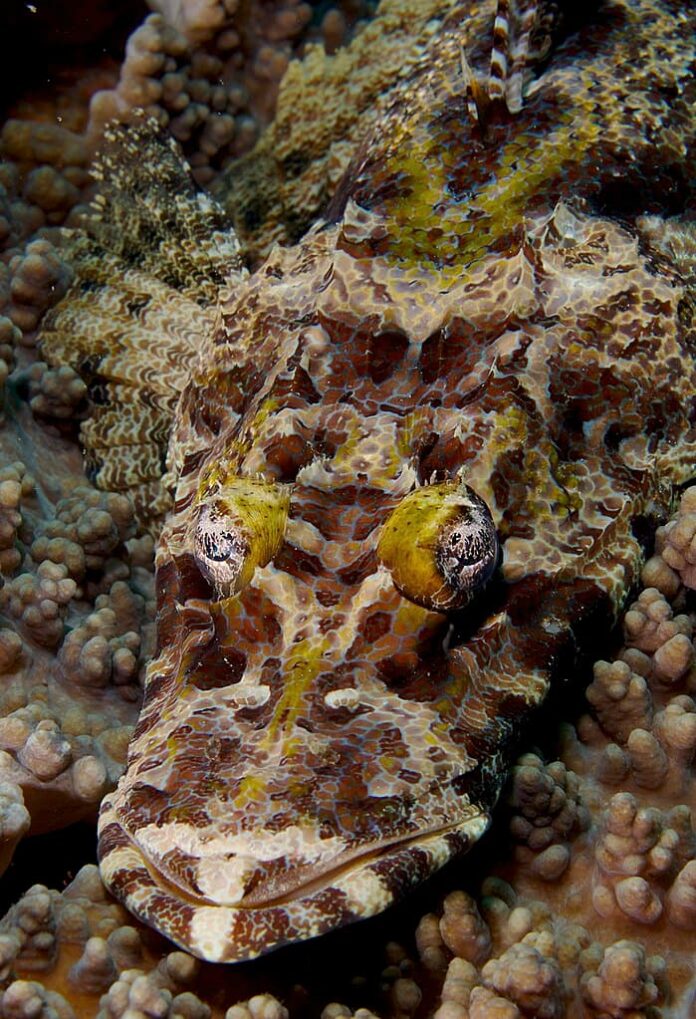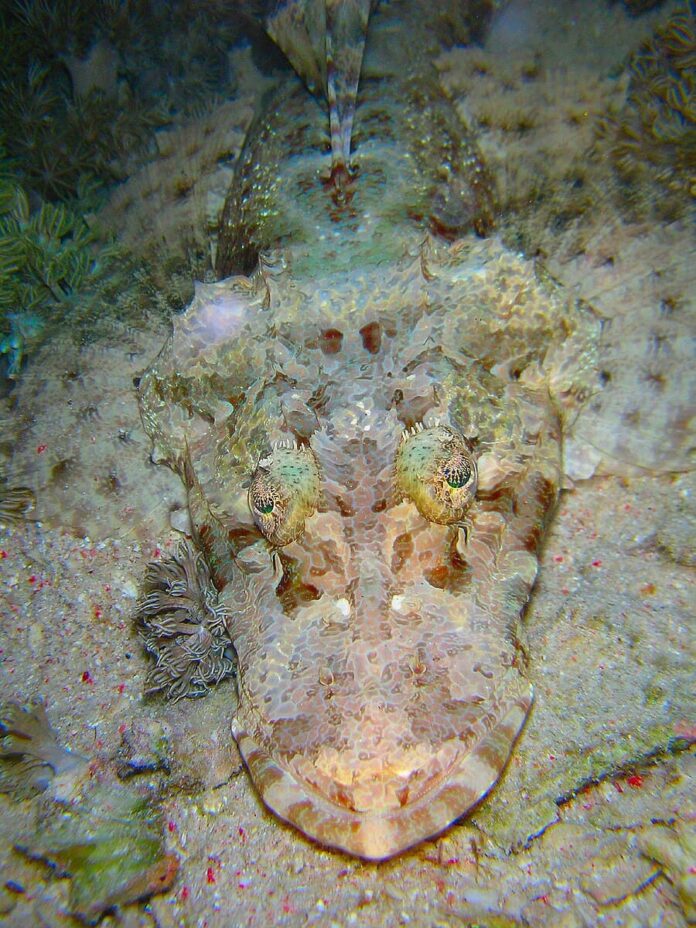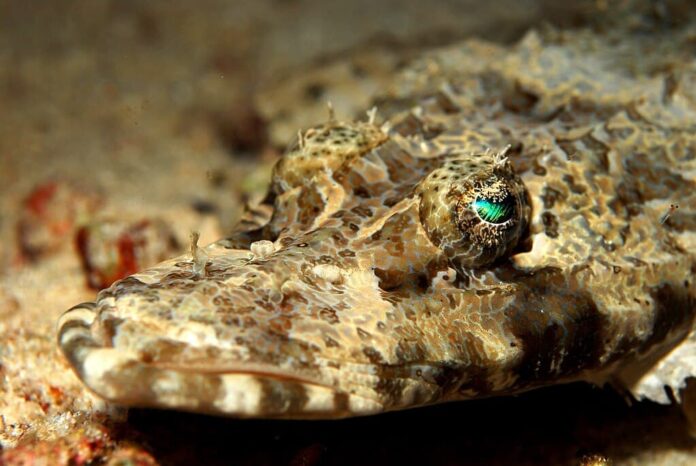Is it half crocodile and half fish? That is not possible. The crocodile fish is a species of marine ray-finned fish that belongs to the flathead family. This fish species has a very strange appearance that is worth getting to know about. In case you come across one, at least you know what they are or if they are harmful or not. Let’s dive deeper and learn about them below.
1Appearance

This fish got its name from the flat jaw-like mouth that is very similar to a crocodile’s mouth. Its bottom jaw is slightly bigger and can snatch a quick underbite with its razor-sharp teeth. A crocodile fish is a medium-sized fish with an average size of 35 centimeters but can grow up to 50 centimeters. It has an elongated body, and its head is flat and long which resembles a duck bill. The eyes of this fish are black and globulous with lappets at the rear, and those lappets are absolutely gorgeous.
Adult crocodile fish have a mosaic pattern of beige to brown spots and sometimes gray to greenish. The coloration of the species varies depending on the surroundings which is helpful for camouflaging in their habitats. At the same time, they can also change their color from pale to dark to blend in. They also have 9 to 10 dorsal spines, 11 dorsal soft rays, 11 anal soft rays, and large pelvic fins. All of these have the same colorations and patterns that allow them to camouflage easily.
2Behavior

Crocodile fish like to live alone and bury themselves, and they only come together to breed. They are usually motionless which makes it easy for divers to approach them as they won’t scurry away. However, they will erect their dorsal fin while remaining motionless when some divers approach. This is to gesture that they know they are being approached so divers shouldn’t do anything threatening.
3Feeding & Habitats

De Beaufort’s flatheads are ambush predators that feed on smaller crustaceans and fish that swim on top of them. Once the prey passes by, the fish will strike in a quick upward snapping motion. Besides these, they will also feed on any food source available such as invertebrates and squids. These bottom-dwellers rely on camouflage by burying in the substrate to hide from their prey.
Crocodile fish have a wide distribution from the Indian Ocean all the way to Japan and Southeast Asia. Across their range, De Beaufort’s flatheads inhabit coral rubble or sandy areas in shallow water near mangroves or seagrasses. Some also live in coral reef and rocky outcrops as well when the conditions for camouflaging is favorable for them. They usually live at 2 to 3 meters deep, and some can live as deep as 12 meters deep.
Related Post: Things You Don’t Know About Angel Sharks




